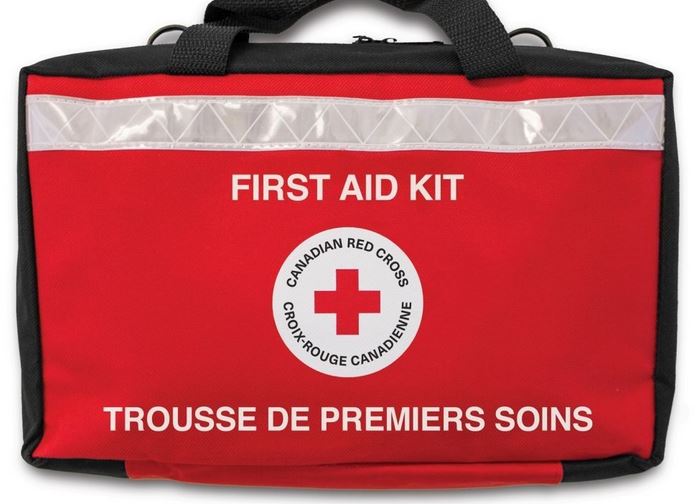What Should a First Aid Kit Include?
A first aid kit can be indispensable for providing immediate treatment to an injured or sick person, but only if it includes the right items. Whether you’re preparing a first aid kit for your business, your home, or the trunk of your car, taking some time today to plan and prepare its contents could end up saving your life or someone else’s.
A Note on Legal Requirements
First, you should know that some areas have specific requirements for what first aid kits must include, especially in industrial and commercial environments. For example, 2019 specification first aid kits are made with industry standard BS 8599-1:2019 in mind, in ICS categories:
· 11.160 First aid
· 13.100 Occupational safety. Industrial hygiene
If you’re preparing a first aid kit for your family, or for a business where these (and other) standards aren’t applicable, you’ll have more wiggle room.
Recommended Contents for a First Aid Kit
The Red Cross recommends the following contents for common first aid kits:
· Absorbent compress dressings. These trauma pads are made to stop severe bleeding and are large enough to cover most wounds.
· Adhesive bandages. Conventional bandages are a must-have for every first aid kit. Be sure to include bandages of many different shapes and sizes to cover all types of wounds.
· Adhesive cloth tape. This tape is breathable, but serves as a microbial barrier as well.
· Antibiotic ointment. This type of ointment can prevent infections and help to seal an open wound.
· Antiseptic wipes. Antiseptic wipes can kill germs on almost any surface.
· Aspirin. Aspirin is a great pain reliever and it has the potential to relieve inflammation as well.
· An emergency blanket. These compact blankets are highly heat reflective, making them suitable for keeping someone warm in cold conditions.
· A breathing barrier. Breathing barriers with one-way valves are perfect for giving CPR.
· A cold compress. Cold compresses can relieve pain, treat burns, and potentially reduce fever.
· Multiple pairs of gloves. Ideally, you’ll include nonlatex, large gloves so most people can use them.
· Hydrocortisone ointment. This ointment is designed to reduce skin irritation and itching.
· A gauze roll. Gauze is sterile, and rolls are ideal for wrapping wounds.
· Gauze pads. You can also apply gauze in the form of pads.
· A thermometer. Oral thermometers tend to work best.
· Tweezers. Tweezers are perfect for a variety of first aid needs.
· Instructions. The materials in a first aid kit aren’t much good unless you know how to use them. That’s why it’s also important to have a basic set of instructions for how to care for various types of injured people.
You can also add more items for a sizable, centralized kit, or reduce the number of items for a smaller, more portable package; it’s up to you.
Self-Prepared or Pre-Made?
Online, you can find hundreds of storefronts and organizations selling pre-made first aid kits. You can also assemble your own, using a simple container and purchasing each item individually. The cost of a pre-made first aid kit isn’t much higher than buying all the items individually yourself in most cases. Additionally, if you assemble a first aid kit yourself, it’s possible you may forget something. For these reasons, pre-made first aid kits are advisable.
Additional Tips
These additional tips can help you create, store, and use your first aid kits successfully:
· Include multiple first aid kits in multiple areas. It’s important to have a first aid kit in a centralized location, but you don’t have to limit yourself to one. Consider including several first aid kits throughout your home and business, so you’re never too far from one.
· Make your first aid kit visible and easily accessible. Don’t tuck your first aid kit into a dusty, rarely seen corner of the building. Put it somewhere it can be seen by most people, most of the time.
· Review and replace the contents of your kit regularly. Don’t assume that everything is still intact and functional; review the contents of your first aid kit on a regular basis and replace anything that’s missing.
· Prepare a radio, a flashlight, and extra batteries. Emergencies come in many forms. With your first aid kit, it’s helpful to have a radio, a flashlight, and extra batteries to keep them powered.
· Prepare food and water. Similarly, it’s a good idea to keep a small stock of distilled water and emergency food rations nearby.
Hopefully, you’ll never face an emergency that threatens someone’s life or health. But if you do, and you have a first aid kit nearby, you’ll be in a position to do something. Always contact emergency services first and get someone on the way before attempting first aid on your own, and only practice first aid if you feel confident in your ability to do so.
Comments
There are 0 comments on this post




